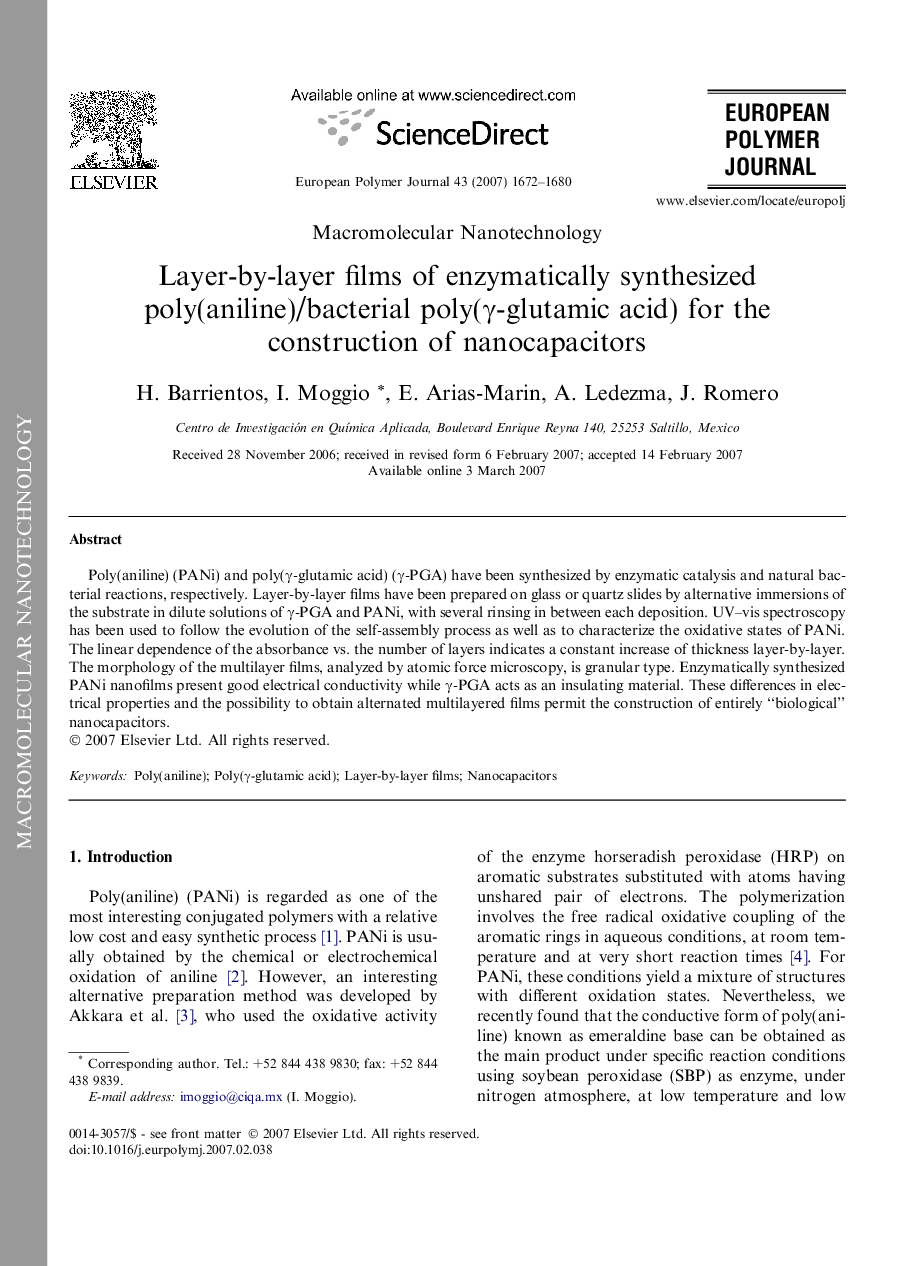| Article ID | Journal | Published Year | Pages | File Type |
|---|---|---|---|---|
| 1403568 | European Polymer Journal | 2007 | 9 Pages |
Abstract
Poly(aniline) (PANi) and poly(γ-glutamic acid) (γ-PGA) have been synthesized by enzymatic catalysis and natural bacterial reactions, respectively. Layer-by-layer films have been prepared on glass or quartz slides by alternative immersions of the substrate in dilute solutions of γ-PGA and PANi, with several rinsing in between each deposition. UV-vis spectroscopy has been used to follow the evolution of the self-assembly process as well as to characterize the oxidative states of PANi. The linear dependence of the absorbance vs. the number of layers indicates a constant increase of thickness layer-by-layer. The morphology of the multilayer films, analyzed by atomic force microscopy, is granular type. Enzymatically synthesized PANi nanofilms present good electrical conductivity while γ-PGA acts as an insulating material. These differences in electrical properties and the possibility to obtain alternated multilayered films permit the construction of entirely “biological” nanocapacitors.
Related Topics
Physical Sciences and Engineering
Chemistry
Organic Chemistry
Authors
H. Barrientos, I. Moggio, E. Arias-Marin, A. Ledezma, J. Romero,
